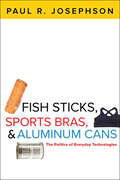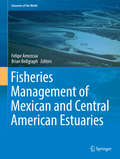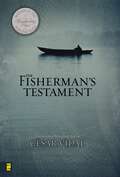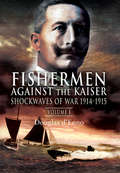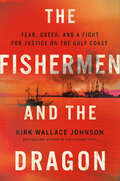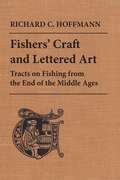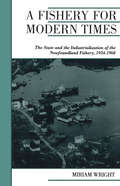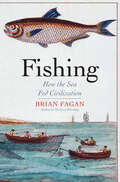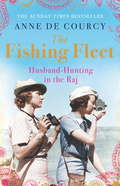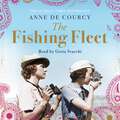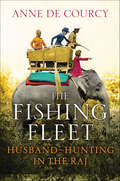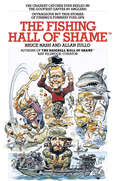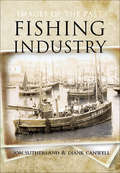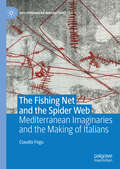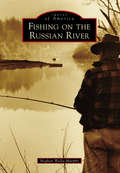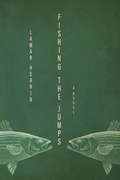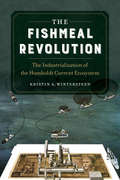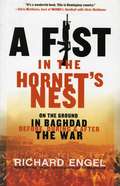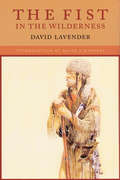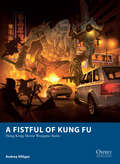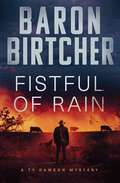- Table View
- List View
Fish Sticks, Sports Bras, & Aluminum: The Politics of Everyday Technologies
by Paul R. JosephsonA revealing look at the history, politics, and social meanings behind everyday objects.Who would have guessed that the first sports bra was made out of two jockstraps sewn together or that it succeeded because of federal anti-discrimination laws? What do simple decisions about where to build a road or whether to buy into the carbon economy have to do with Hurricane Katrina or the Fukushima nuclear disaster? How did massive flood control projects on the Mississippi River and New Deal dams on the Columbia River lead to the ubiquity of high fructose corn syrup? And what explains the creation—and continued popularity—of the humble fish stick?In Fish Sticks, Sports Bras, and Aluminum Cans, historian Paul R. Josephson explores the surprising origins, political contexts, and social meanings of ordinary objects. Drawing on archival materials, technical journals, interviews, and field research, this engaging collection of essays reveals the forces that shape (and are shaped by) everyday objects.Ultimately, Josephson suggests that the most familiar and comfortable objects—sugar and aluminum, for example, which are inextricably tied together by their linked history of slavery and colonialism—may have the more astounding and troubling origins. Students of consumer studies and the history of technology, as well as scholars and general readers, will be captivated by Josephson’s insights into the complex relationship between society and technology.“Josephson’s conclusions are guaranteed to make you think of the modern world and its interconnectedness in a different light.” —Cosmos“Every chapter of this book offers surprising insights and is a pleasure to read.” —ICON
Fish Sticks, Sports Bras, and Aluminum Cans: The Politics of Everyday Technologies
by Paul R. JosephsonWhat do bananas, rocket ships, bicycles, and French fries have in common?Who would have guessed that the first sports bra was made out of two jockstraps sewn together or that it succeeded because of federal anti-discrimination laws? What do simple decisions about where to build a road or whether to buy into the carbon economy have to do with Hurricane Katrina or the Fukushima nuclear disaster? How did massive flood control projects on the Mississippi River and New Deal dams on the Columbia River lead to the ubiquity of high fructose corn syrup? And what explains the creation—and continued popularity—of the humble fish stick? In Fish Sticks, Sports Bras, and Aluminum Cans, historian Paul R. Josephson explores the surprising origins, political contexts, and social meanings of ordinary objects. Drawing on archival materials, technical journals, interviews, and field research, this engaging collection of essays reveals the forces that shape (and are shaped by) everyday objects. Ultimately, Josephson suggests that the most familiar and comfortable objects—sugar and aluminum, for example, which are inextricably tied together by their linked history of slavery and colonialism—may have the more astounding and troubling origins. Students of consumer studies and the history of technology, as well as scholars and general readers, will be captivated by Josephson’s insights into the complex relationship between society and technology.
Fisheries Management of Mexican and Central American Estuaries
by Felipe Amezcua Brian BellgraphThe tropical estuarine systems of Mexico and Central America are an important part of the region´s coastlines; for example Mexico alone possesses more than 770 thousand hectares of mangroves, as well as the largest estuarine mangrove complex on the American Pacific (Marismas Nacionales), yet is one of the poorest studied areas in the world. This is the first book that deals extensively with fisheries management issues in this region from physical-chemistry, ecological and socioeconomic views, providing an understanding on the function and the effects of human activities on these areas, with works undertaken by local scientist.
The Fisherman's Testament
by Cãesar VidalIn AD 62, Marco Junio Vitalis, a seasoned military general, is assigned to interrogate an elderly Jewish fisherman called Peter and unravels a story that shakes the very foundations of the Roman Empire. Now making its debut in English, this award-winning Spanish bestseller transports readers to ancient Rome where the stakes are high for Christ followers.
Fishermen Against the Kaiser: Shockwaves of War, 1914–1915
by Douglas d'EnnoBritish fishermen are among the unsung heroes of the First World War. The conflict with Germany had an immediate and enduring impact on their lives and livelihood. They were immediately caught up in the sea war against the Kaisers navy, confronting the threats presented by the submarines, minelayers, gunboats and capital ship of the High Seas Fleet. Often they found themselves thrust into strange, dangerous situations, which put their lives at risk and tested to the limit their bravery and skill as seamen. This is their fascinating story.For the first time in this two-volume study Douglas dEnno provides a comprehensive and lasting record of the services rendered by the fishermen and their vessels, both under naval control and on their own account. His pioneering history shows the full extent of their contribution to the British war effort, from minesweeping and submarine detection to patrol, escort and counterattack duties. The areas of action were not limited to the home waters of the Channel, the North Sea and the Western Approaches but ranged as far as the Arctic and the Mediterraneans Aegean and Adriatic seas. Extraordinary stories are recounted here of the hazards of minesweeping, battles with U-boats, decoy missions, patrols, blockades, rescues and capture by the enemy. First-hand accounts make up the essence of the material. Reports from the leading trade journals, specialist literature and personal manuscripts vividly recall the fishermens experiences and the hardships and dangers they faced throughout the war.
The Fishermen and the Dragon: Fear, Greed, and a Fight for Justice on the Gulf Coast
by Kirk Wallace JohnsonA gripping, twisting account of a small town set on fire by hatred, xenophobia, and ecological disaster—a story that weaves together corporate malfeasance, a battle over shrinking natural resources, a turning point in the modern white supremacist movement, and one woman&’s relentless battle for environmental justice.By the late 1970s, the fishermen of the Texas Gulf Coast were struggling. The bays that had sustained generations of shrimpers and crabbers before them were being poisoned by nearby petrochemical plants, oil spills, pesticides, and concrete. But as their nets came up light, the white shrimpers could only see one culprit: the small but growing number of newly resettled Vietnamese refugees who had recently started fishing. Turf was claimed. Guns were flashed. Threats were made. After a white crabber was killed by a young Vietnamese refugee in self-defense, the situation became a tinderbox primed to explode, and the Grand Dragon of the Texas Knights of the Ku Klux Klan saw an opportunity to stoke the fishermen&’s rage and prejudices. At a massive Klan rally near Galveston Bay one night in 1981, he strode over to an old boat graffitied with the words U.S.S. VIET CONG, torch in hand, and issued a ninety-day deadline for the refugees to leave or else &“it&’s going to be a helluva lot more violent than Vietnam!&” The white fishermen roared as the boat burned, convinced that if they could drive these newcomers from the coast, everything would return to normal. A shocking campaign of violence ensued, marked by burning crosses, conspiracy theories, death threats, torched boats, and heavily armed Klansmen patrolling Galveston Bay. The Vietnamese were on the brink of fleeing, until a charismatic leader in their community, a highly decorated colonel, convinced them to stand their ground by entrusting their fate with the Constitution. Drawing upon a trove of never-before-published material, including FBI and ATF records, unprecedented access to case files, and scores of firsthand interviews with Klansmen, shrimpers, law enforcement, environmental activists, lawyers, perpetrators and victims, Johnson uncovers secrets and secures confessions to crimes that went unsolved for more than forty years. This explosive investigation of a forgotten story, years in the making, ultimately leads Johnson to the doorstep of the one woman who could see clearly enough to recognize the true threat to the bays—and who now represents the fishermen&’s last hope.
Fishers' Craft and Lettered Art: Tracts on Fishing from the End of the Middle Ages (The Royal Society of Canada Special Publications #12)
by Richard C. HoffmannFishers' Craft and Lettered Art provides editions, English translations, and analysis from social, cultural, and environmental perspectives of the three oldest European extended tracts on fishing. Richard Hoffmann discusses the history of fishing in popular culture and outlines the economic and ecologic considerations needed to examine and understand the fishing manuals. Hoffmann further explores how continental fishing traditions were conveyed from oral craft practice into printed culture, and proposes that these manuals demonstrate a lively and complex interaction between written texts and popular culture. The tracts are presented in their original languages - Spanish and German - with facing page translations. Close attention is paid to original setting, functions, and possible range of readings, with detailed explanatory notes to help modern fishers and historians.Fishers' Craft and Lettered Art is a fascinating look at one vital aspect of everyday life at the end of the Middle Ages.
A Fishery for Modern Times
by Miriam WrightIn the early 1990s, the northern cod populations off the coast of Newfoundland had become so depleted that the federal government placed a moratorium on commercial fishing. The impact was devastating, both for Newfoundland's economy and for local fishing communities. Today, although this natural resource - exploited commercially for over 500 years - appears to be returning in diminished numbers, many fisheries scientists and fishers question whether the cod will ever return to its former abundance.In A Fishery for Modern Times, Miriam Wright argues that the recent troubles in the fishery can be more fully understood by examining the rise of the industrial fishery in the mid-twentieth century. The introduction of new harvesting technologies and the emergence of 'quick freezing', in the late 1930s, eventually supplanted household production by Newfoundland's fishing families. While the new technologies increased the amount of fish caught in the northwest Atlantic, Wright argues that the state played a critical role in fostering and financing the industrial frozen fish sector. Many bureaucrats and politicians, including Newfoundland's premier, Joseph Smallwood, believed that making the Newfoundland fishery 'modern', with centralization, technology, and expertise, would transform rural society, solving deep-seated economic and social problems.A Fishery for Modern Times examines the ways in which the state, ideologies of development, and political, economic, and social factors, along with political actors and fishing company owners, contributed to the expansion of the industrial fishery from the 1930s through the 1960s. While the promised prosperity never fully materialized, the continuing reliance on approaches favouring high-tech, big capital solutions put increasing pressure on cod populations in the years that followed. As Wright concludes, 'We can no longer afford to view the fisheries resources as "property" of the state and industry, to do with it as they choose. That path had led only to devastation of the resource, economic instability, and great social upheaval.'
Fishing: How the Sea Fed Civilization
by Brian FaganAn archaeologist examines humanity&’s last major source of food from the wild, and how it enabled and shaped the growth of civilization.In this history of fishing—not as sport but as sustenance—archaeologist and best-selling author Brian Fagan argues that fishing was an indispensable and often overlooked element in the growth of civilization. It sustainably provided enough food to allow cities, nations, and empires to grow, but it did so with a different emphasis. Where agriculture encouraged stability, fishing demanded movement. It frequently required a search for new and better fishing grounds; its technologies, centered on boats, facilitated movement and discovery; and fish themselves, when dried and salted, were the ideal food—lightweight, nutritious, and long-lasting—for traders, travelers, and conquering armies. This history of the long interaction of humans and seafood tours archaeological sites worldwide to show readers how fishing fed human settlement, rising social complexity, the development of cities, and ultimately the modern world.&“A tour-de-force . . . Achieves its goal of putting fishing on par with hunter-gathering and agriculture in the history of human civilization.&” —Leon Vlieger, Natural History Book Service &“A valuable book as well as an interesting one . . . Fagan succeeds in providing an admirable primer for the enthusiast and a welcome tool for the historian.&” —Economist&“A unique panoramic survey of the field.&” —Laurence A. Marschall, Natural History&“Gently scholarly, elegant . . . A compelling picture of how fishing was so integral in each society&’s development. A multilayered, nuanced tour of &“fishing societies throughout the world&” and across millennia.&” —Kirkus Reviews
The Fishing Fleet: Husband-Hunting in the Raj
by Anne de CourcyThe adventurous young women who sailed to India during the Raj in search of husbands.From the late 19th century, when the Raj was at its height, many of Britain's best and brightest young men went out to India to work as administrators, soldiers and businessmen. With the advent of steam travel and the opening of the Suez Canal, countless young women, suffering at the lack of eligible men in Britain, followed in their wake. This amorphous band was composed of daughters returning after their English education, girls invited to stay with married sisters or friends, and yet others whose declared or undeclared goal was simply to find a husband. They were known as the Fishing Fleet, and this book is their story, hitherto untold.For these young women, often away from home for the first time, one thing they could be sure of was a rollicking good time. By the early 20th century, a hectic social scene was in place, with dances, parties, amateur theatricals, picnics, tennis tournaments, cinemas and gymkhanas, with perhaps a tiger shoot and a glittering dinner at a raja's palace thrown in. And, with men outnumbering women by roughly four to one, romances were conducted at alarming speed and marriages were frequent. But after the honeymoon, life often changed dramatically: whisked off to a remote outpost with few other Europeans for company, and where constant vigilance was required to guard against disease, they found it a far cry from the social whirlwind of their first arrival.Anne de Courcy's sparkling narrative is enriched by a wealth of first-hand sources - unpublished memoirs, letters and diaries rescued from attics - which bring this forgotten era vividly to life.
The Fishing Fleet: Husband-Hunting in the Raj
by Anne de CourcyThe adventurous young women who sailed to India during the Raj in search of husbands.From the late 19th century, when the Raj was at its height, many of Britain's best and brightest young men went out to India to work as administrators, soldiers and businessmen. With the advent of steam travel and the opening of the Suez Canal, countless young women, suffering at the lack of eligible men in Britain, followed in their wake. This amorphous band was composed of daughters returning after their English education, girls invited to stay with married sisters or friends, and yet others whose declared or undeclared goal was simply to find a husband. They were known as the Fishing Fleet, and this book is their story, hitherto untold.For these young women, often away from home for the first time, one thing they could be sure of was a rollicking good time. By the early 20th century, a hectic social scene was in place, with dances, parties, amateur theatricals, picnics, tennis tournaments, cinemas and gymkhanas, with perhaps a tiger shoot and a glittering dinner at a raja's palace thrown in. And, with men outnumbering women by roughly four to one, romances were conducted at alarming speed and marriages were frequent. But after the honeymoon, life often changed dramatically: whisked off to a remote outpost with few other Europeans for company, and where constant vigilance was required to guard against disease, they found it a far cry from the social whirlwind of their first arrival.Anne de Courcy's sparkling narrative is enriched by a wealth of first-hand sources - unpublished memoirs, letters and diaries rescued from attics - which bring this forgotten era vividly to life.
The Fishing Fleet: Husband-Hunting in the Raj
by Anne de CourcyFrom the late 19th century, when the Raj was at its height, many of Britain's best and brightest young men went out to India to work as administrators, soldiers and businessmen. With the advent of steam travel and the opening of the Suez Canal, countless young women, suffering at the lack of eligible men in Britain, followed in their wake. This amorphous band was composed of daughters returning after their English education, girls invited to stay with married sisters or friends, and yet others whose declared or undeclared goal was simply to find a husband. They were known as the Fishing Fleet, and this book is their story, hitherto untold.For these young women, often away from home for the first time, one thing they could be sure of was a rollicking good time. By the early twentieth century, a hectic social scene was in place, with dances, parties, amateur theatricals, picnics, tennis tournaments, cinemas, gymkhanas with perhaps a tiger shoot and a glittering dinner at a raja's palace thrown in. And, with men outnumbering women by roughly four to one, romances were conducted at alarming speed and marriages were frequent. But after the honeymoon life often changed dramatically: whisked off to a remote outpost with few other Europeans for company and where constant vigilance was required to guard against disease, they found it a far cry from the social whirlwind of their first arrival.Anne de Courcy's sparkling narrative is enriched by a wealth of first-hand sources - unpublished memoirs, letters and diaries rescued from attics - which bring this forgotten era vividly to life.Read by Greta Scacchi.(p) 2012 Orion Publishing Group
The Fishing Fleet: Husband-Hunting in the Raj
by Anne de CourcyFrom the author of the critically acclaimed biographies Diana Mosley and The Viceroy's Daughters comes a fascinating, hugely entertaining account of the Victorian women who traveled halfway around the world on the hunt for a husband.By the late nineteenth century, Britain's colonial reign seemed to know no limit—and India was the sparkling jewel in the Imperial crown. Many of Her Majesty's best and brightest young men departed for the Raj to make their careers, and their fortunes, as bureaucrats, soldiers, and businessmen. But in their wake they left behind countless young ladies who, suddenly bereft of eligible bachelors, found themselves facing an uncertain future.With nothing to lose and everything to gain, some of these women decided to follow suit and abandon their native Britain for India's exotic glamor and—with men outnumbering women by roughly four to one in the Raj—the best chance they had at finding a man.Drawing on a wealth of firsthand sources, including unpublished memoirs, letters, photographs, and diaries, Anne de Courcy brings the incredible world of "the Fishing Fleet," as these women were known, to life. In these sparkling pages, she describes the glittering whirlwind of dances, parties, amateur theatricals, picnics, tennis tournaments, cinemas, tiger shoots, and palatial banquets that awaited in the Raj, all geared toward the prospect of romance. Most of the girls were away from home for the first time, and they plunged headlong into the heady dazzle of expatriate social life; marriages were frequent.However, after the honeymoon many women were confronted with a reality that was far from the fairy tale they'd been chasing. With her signature diligence and sensitivity, de Courcy looks beyond the allure of the Raj to tell the real stories of these marriages built on convenience and unwieldy expectations. Wives were whisked away to distant outposts with few other Europeans for company. Transplanted to isolated plantations and remote towns, they endured heat, boredom, discomfort, illness, and motherhood removed from familiar comforts—a far cry from the magical world they were promised upon arrival.Rich with drama and color, The Fishing Fleet is a sumptuous, utterly compelling real-life saga of adventure, romance, and heartbreak in the heyday of the British Empire.
The Fishing Hall of Shame
by Bruce Nash Allan ZulloSportswriters and celebrity fishing guides, expert anglers, and Hall of Shamers themselves spill the whole truth--hook, line and sinker-- in this wacky collection of the funniest incidents in sport fishing. Compiled by the creators of the bestselling Sports Hall of Shame series.
Fishing in the Tiber
by Lance MorrowHistory is like the Tiber, Henry James once wrote, "swift and dirty." In a collection of essays written over the past decade for Time magazine, Lance Morrow goes on his own fishing expedition in the muddy stream of history, and his catch is as rich as it is varied. These are the lively meditations on people, events, movements, and oddities of the American scene that have brought Morrow numerous honors, including the National Magazine Award, and established him as one of the preeminent prose stylists of our day. A historian of the future seeking to learn how life was lived in the 1970s and '80s could do no better than to start with these calls "the hard questions" of our lives: racism, abortion, the meaning of an oath. He reevaluates the reputation of figures such as John Kennedy, Richard Nixon, and Charles Lindbergh - and talks about U.S. Grant and the forbidden subject of failure in American life. What sort of people are we really, and where do we repeatedly go wrong? But Fishing in the Tiber can also be amusing and offbeat, as when Morrow examines such phenomena as the confessional memoir, the telephone answering machine, the movie Casablanca, or the bodybulding fad. In Lance Morrow's hands, the formal essay is alive and well.
Fishing Industry: Images Of The Past (Images of the Past)
by Diane Canwell Jon SutherlandWorking with prestigious archives of contemporary photographs, the authors chart the history of Britain's fishing heritage with 120 rarely seen photographs. Fishermen were hardy individuals with a precarious existence dictated by the changing rhythm of the wind and the waves. While at sea, their womenfolk cleaned, salted, pressed and bulked the fish. The fishermen of the East Coast are the last of the hunter gathers, in the later 19th and early 20th century British fishery expanded and exceeded its European rivals to become the biggest fishery in the world. Dwindling fish stocks after the Second World War saw the end of the fishing industry as it had been known, now the trawlers had to make the hazardous voyage to deeper waters. This book celebrates the heyday of the British fishing industry, the people, the processes and the vessels.
The Fishing Net and the Spider Web: Mediterranean Imaginaries and the Making of Italians (Mediterranean Perspectives)
by Claudio FoguThis book explores the role of Mediterranean imaginaries in one of the preeminent tropes of Italian history: the formation or 'making of' Italians. While previous scholarship on the construction of Italian identity has often focused too narrowly on the territorial notion of the nation-state, and over-identified Italy with its capital, Rome, this book highlights the importance of the Mediterranean Sea to the development of Italian collective imaginaries. From this perspective, this book re-interprets key historical processes and actors in the history of modern Italy, and thereby challenges mainstream interpretations of Italian collective identity as weak or incomplete. Ultimately, it argues that Mediterranean imaginaries acted as counterweights to the solidification of a 'national' Italian identity, and still constitute alternative but equally viable modes of collective belonging.
Fishing on the Russian River (Images of America)
by Meghan Walla-MurphyThe Russian River tells a rich story of Sonoma County, both historically and ecologically. For as long as can be remembered, there has been an intimate relationship between the people of the Russian River and the fish, specifically the salmon and the steelhead. This tale of fishing begins with the Pomo people's communal fishing forays, winds through Russian exploration and early American settlement, and lands in the present time. For millennia, fishing has been a cultural cornerstone on the Russian River. Unfortunately, this once lively and productive salmonid fishery is dying. Overfishing, gravel mining, increased sedimentation from logging and agriculture, dams, and overdevelopment along the riverbanks and tributaries have all caused a decline in salmonid numbers. Thankfully, through collaborative efforts of local residents, nonprofit organizations, ranchers, farmers, and government agencies, fish populations are rebounding.
Fishing the Jumps: A Novel
by Lamar HerrinFrom the author of Romancing Spain, a novel about two fishing buddies and about home, family, and the stories we tell to keep the illusion alive.In his latest novel, award-winning writer Lamar Herrin highlights the art of storytelling and the value of friendship with a lush, outdoor landscape serving as a backdrop. Set over the course of a weekend spent fishing on an Adirondack lake, two middle-aged friends—Jim McManus and Walter Kidman—sip Jim Beam on the rocks and share stories of memory and camaraderie as the past and present meld to reveal that what happens in the past rarely stays there.Herrin explores the kaleidoscopic effect of memory while examining the rise and fall of life in the South. Presented is a story about a displaced southerner who tells the account of a family whose fortune was made in the post-World War II apparel industry, but it is the extended family that claims the narrator’s attention and sympathy, the grandparents, the aunts and uncles and cousins, and the stories told and retold about those family members until they reach the status of myth. It is a novel of two lakes—the small glacial one where Jim and Walter fish and exchange stories, and the southern one, created when a dam was built and numerous mountain settlements were flooded. It is a novel chronicling the aftermath of World War II, who won what, and when the time comes, who stands to lose.Lyrical and poetic yet playful and entertaining, Fishing the Jumps is more than just fishing tales. It is a seamless and haunting novel that is ultimately a story of the deep and necessary relationship between two men and the binding and nourishing effect of family—not only of an extended family, but of a whole community, and in fact, a whole region.Praise for Fishing the Jumps“Deliberate and gorgeous, with a mastery of description and a searing command of American culture. Fishing the Jumps is quiet, thoughtfully told, but with a thrashing undercurrent . . . . What seems almost a low-key dialogue on a placid lake is actually a turbulent family history that refuses to sink to the bottom of memory. This makes an elegant structure for a fish story that plumbs the nature of storytelling itself. It is a thrilling, intense novel to read. I was hooked.” —Bobbie Ann Mason, author of Patchwork and The Girl in the Blue Beret“Herrin’s writing is vivid, lyrical, and intense. But the glory of this novel is Herrin’s gift for recreating a particular time and place, the decades after WWII, the exuberance of summers by the mountain lake, the brilliance of Little Howie Whalen building a textile empire. These characters, and this time, come alive in a way that haunts the reader.” —Robert Morgan, author of Gap Creek“Lamar Herrin may be the best writer of whom you have never heard . . . there’s no denying that Fishing the Jumps is a work of genius . . . Herrin’s narrative style is seamless, his emotional intelligence expert. . . . [A] bildungsroman, a mystery, and a prose poem, too, in its lush, layered honesty, verbal ingenuity, and elegant humanity.” —Linda Elisabeth LaPinta, Kentucky Humanities
The Fishmeal Revolution: The Industrialization of the Humboldt Current Ecosystem
by Kristin A. WintersteenOff the Pacific coast of South America, nutrients mingle with cool waters rising from the ocean’s depths, creating one of the world’s most productive marine ecosystems: the Humboldt Current. When the region’s teeming populations of fish were converted into a key ingredient in animal feed—fishmeal—it fueled the revolution in chicken, hog, and fish farming that swept the United States and northern Europe after World War II.The Fishmeal Revolution explores industrialization along the Peru-Chile coast as fishmeal producers pulverized and exported unprecedented volumes of marine proteins to satisfy the growing taste for meat among affluent consumers in the Global North. A relentless drive to maximize profits from the sea occurred at the same time that Peru and Chile grappled with the challenge of environmental uncertainty and its potentially devastating impact. In this exciting new book, Kristin A. Wintersteen offers an important history and critique of the science and policy that shaped the global food industry.
Fission and Fusion of Allies: The ROK Nuclear Quest and U.S.–France Competition and Cooperation
by Lyong Choi Jooyoung LeeThis book traces the development of U.S-led global nuclear non-proliferation diplomacy during the three decades since the Eisenhower’s “Atoms for Peace” in 1953. The U.S. non-proliferation efforts had diverse obstacles. It had to prevent nuclear states’ export of nuclear technology while dissuading non-nuclear states from developing nuclear weapons. In addition, building non-proliferation regime was not always its top foreign policy priority. To understand the complex process of non-proliferation, the book examines the relations among three different actors in the nuclear field: a global non-proliferation regime builder (U.S.), a potential nuclear proliferator (France) and a would-be nuclear state (Republic of Korea). In tracing how they developed nuclear strategies, conflicting and compromising with one another, the book pays special attention to how the transforming Cold War structure in the 1970s not only affected foreign policies of the involved countries but also complicated their relationship. The exploration ultimately highlights the multidimensional nature of international discussion on nuclear non-proliferation as the ROK’s nuclear development attempts, U.S. non-proliferation efforts, and the U.S.-France nuclear technology cooperation in the 1970s were all deeply connected.
A Fist in the Hornet's Nest: On the Ground in Baghdad Before, During & After the War
by Richard EngelWhen war broke out in Iraq, every major U.S. network pulled its correspondents from the scene. Despite the risk, Richard Engel stayed. As our tanks entered Baghdad in April 2003, he was there, bringing the Iraqi war into American homes as a stringer for ABC news. Determined to deliver the whole Middle East story, Engel moved to Cairo in 1996 after graduating from Stanford to learn 'street' Arabic. Then to dig even deeper into the complicated powder-keg of the Israeli-Palestinian conflict, he settled in Jerusalem.Now as Iraq enters its post-war phase and the Gulf region continues to dominate our nation's consciousness, more and more Americans will come to know and trust Richard Engel--especially in his current role as a correspondent for NBC Nightly News with Tom Brokaw. Both analytical and anecdotal, this book leads us through the war in Iraq, dissecting a myriad of Middle East issues, all from the vantage point of someone who is 'on the ground and in the streets' to get the real story.
The Fist in the Wilderness
by David Lavender David J. WishartThe story of the American fur trade has been told many times from different viewpoints, but David Lavender was the first to place it within the overall contest for empire between Britain and the United States. Rather than offering a simple hagiography of men like Jedediah Smith, Kit Carson, Jim Bridger and other legendary trappers, Lavender relates the story of men such as John Jacob Astor and Ramsay Crooks who competed with Britain’s Hudson’s Bay Company for the fur resources of the Great Lakes region and the upper Missouri River country. Within this framework of contest and competition, Lavender shows how the American Fur Company learned to exploit the needs and wants of Indian tribes to gain a superior economic position over the British. The brutal and bloody rivalry helped Ramsay Crooks develop the techniques for transporting furs, supplying trappers, and selling pelts that made fur trapping such an integral economic activity in early U.S. history.
A Fistful of Kung Fu - Hong Kong Movie Wargame Rules
by Andrea Sfiligoi Fabien LascombeRecreate scenes from Hong Kong action cinema like Enter the Dragon, Kill Bill, Big Trouble in Little China, Crouching Tiger - Hidden Dragon, and Hard Boiled. A Fistful of Kung Fu is set in a modern world walking a precarious line between the technological advances of next-generation technology and the tradition and mysticism of ancient cultures. Kung Fu schools face off in no-holds barred martial arts tournaments. Evil corporations hire hitmen and infiltrators to steal each other's secrets. Overworked SWAT teams respond to street-level gunfights between feuding Triad and Yakuza clans. Ancient artefacts are sought by hopping vampires and cyborgs alike, each seeking to harness the power of the Four Dragon Kings and control the world. Bullets, punches, kicks and throwing stars fly in slow motion as martial arts heroes and gun-wielding cops defeat enemy after enemy in the pursuit of evil masterminds.Possible factions range from Chinese Triads and the Japanese Yakuza to Ninja clans, martial arts schools, the men and women of the Hong Kong Police Department, demons, secret societies and almost anything else you can imagine! All struggle for supremacy - destroying the city in the process.A Fistful of Kung Fu uses a colored dice system to keep track of wounds and fatigue of the main characters. Mooks and supporting cast are swatted like flies, but can still be dangerous when given the advantage of numbers or automatic weaponry. Based on the popular Ganesha Games rules system, A Fistful of Kung Fu introduces martial arts combat with manoeuvres that have different outcomes depending on the degree of success, and which allow for counter-attacks when they fail, giving a flowing, appropriate combat system. The game also includes rules for challenges and "gun-fu" stunts. Each gang in the game comprises 1-3 principal characters and 5-15 mooks that move as small groups of up to 5 models each.
Fistful of Rain (The Ty Dawson Mysteries)
by Baron BirtcherThe second Sheriff Dawson mystery has &“lots of twists and turns that stretch back over years, then a mind-blowing ending that puts everything into place&” (Killer Nashville). Winner—2019 Best Book of the Year, Killer Nashville Ty Dawson, now the sheriff of Oregon&’s Meriwether County, is ready to put a trying year behind him, but he&’s afforded no such luck. In a country still coming to grips with the Vietnam War, Watergate, and Charles Manson, Ty&’s neck of the woods isn&’t safe from the turmoil—especially when a commune of young so-called hippies springs up out of nowhere . . . A longtime local sheep rancher accuses the Rainbow Ranch residents of livestock theft, putting Ty in the middle of a culture clash. Though Ty finds no evidence of a crime, the rancher brings in his own stock detective. Behind fences topped with razor wire, the commune and its enigmatic guru hold secrets of their own—many of which have nothing to do with peace, love, and understanding. Tensions flare, setting off a bloody wave of violence that will forever scar the place Ty calls home, unless he can stop it. &“Elegantly written . . . Ty may strike some readers as almost too smart, too well educated, and too pedantic for a small-town sheriff, but his insights into 1970s social issues make him an irresistible spokesman for the era.&” —Publishers Weekly &“A modern Western . . . The characters are well developed, and place descriptions make it easy to visualize the landscapes.&” —New York Journal of Books
